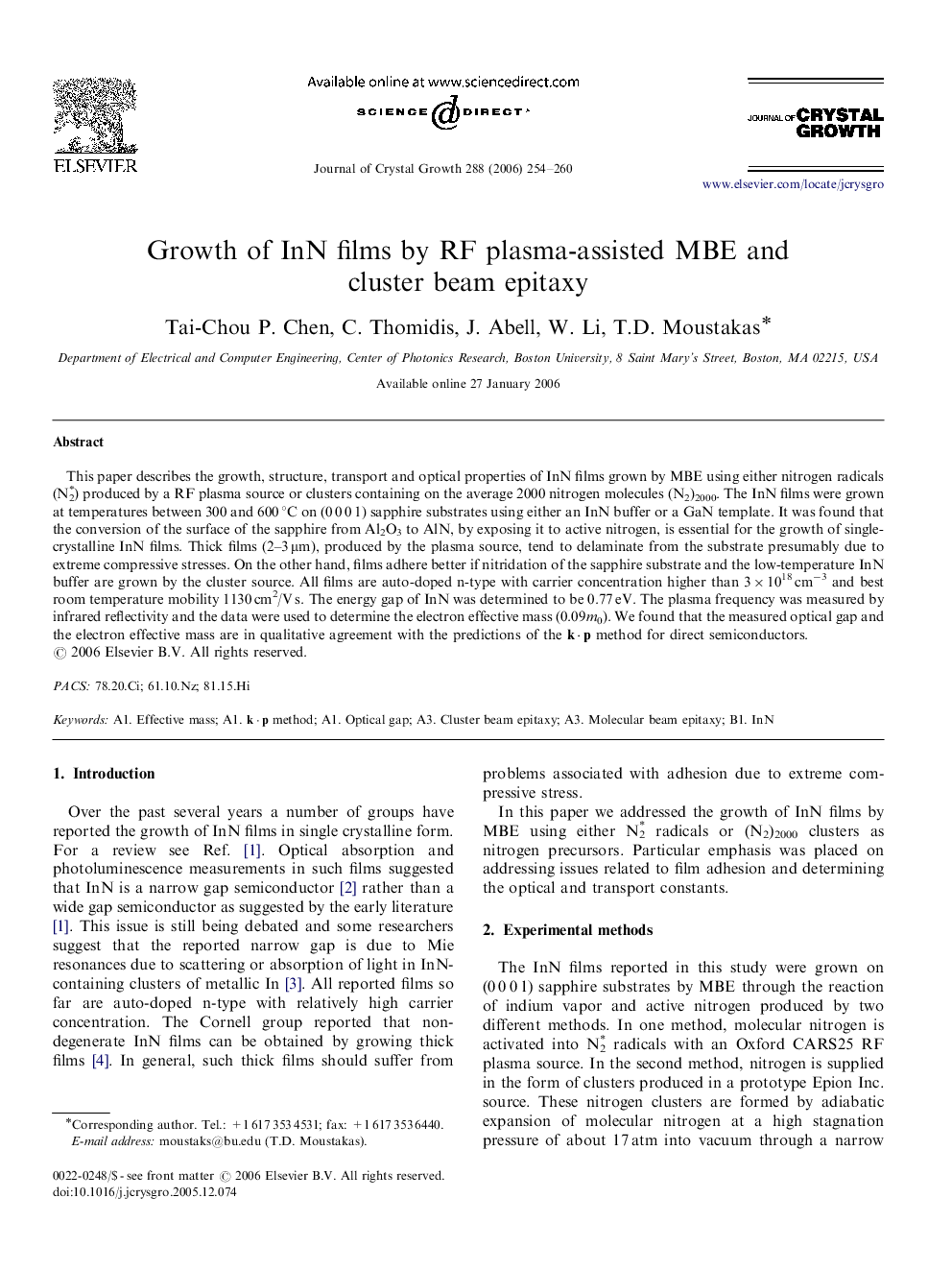| Article ID | Journal | Published Year | Pages | File Type |
|---|---|---|---|---|
| 1796190 | Journal of Crystal Growth | 2006 | 7 Pages |
This paper describes the growth, structure, transport and optical properties of InN films grown by MBE using either nitrogen radicals (N2*) produced by a RF plasma source or clusters containing on the average 2000 nitrogen molecules (N2)2000. The InN films were grown at temperatures between 300 and 600 °C on (0 0 0 1) sapphire substrates using either an InN buffer or a GaN template. It was found that the conversion of the surface of the sapphire from Al2O3 to AlN, by exposing it to active nitrogen, is essential for the growth of single-crystalline InN films. Thick films (2–3 μm), produced by the plasma source, tend to delaminate from the substrate presumably due to extreme compressive stresses. On the other hand, films adhere better if nitridation of the sapphire substrate and the low-temperature InN buffer are grown by the cluster source. All films are auto-doped n-type with carrier concentration higher than 3×1018 cm−3 and best room temperature mobility 1130 cm2/V s. The energy gap of InN was determined to be 0.77 eV. The plasma frequency was measured by infrared reflectivity and the data were used to determine the electron effective mass (0.09m0). We found that the measured optical gap and the electron effective mass are in qualitative agreement with the predictions of the k·p method for direct semiconductors.
